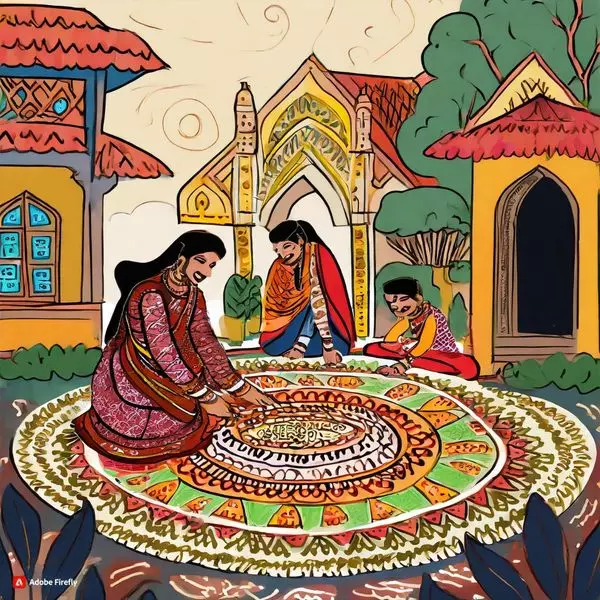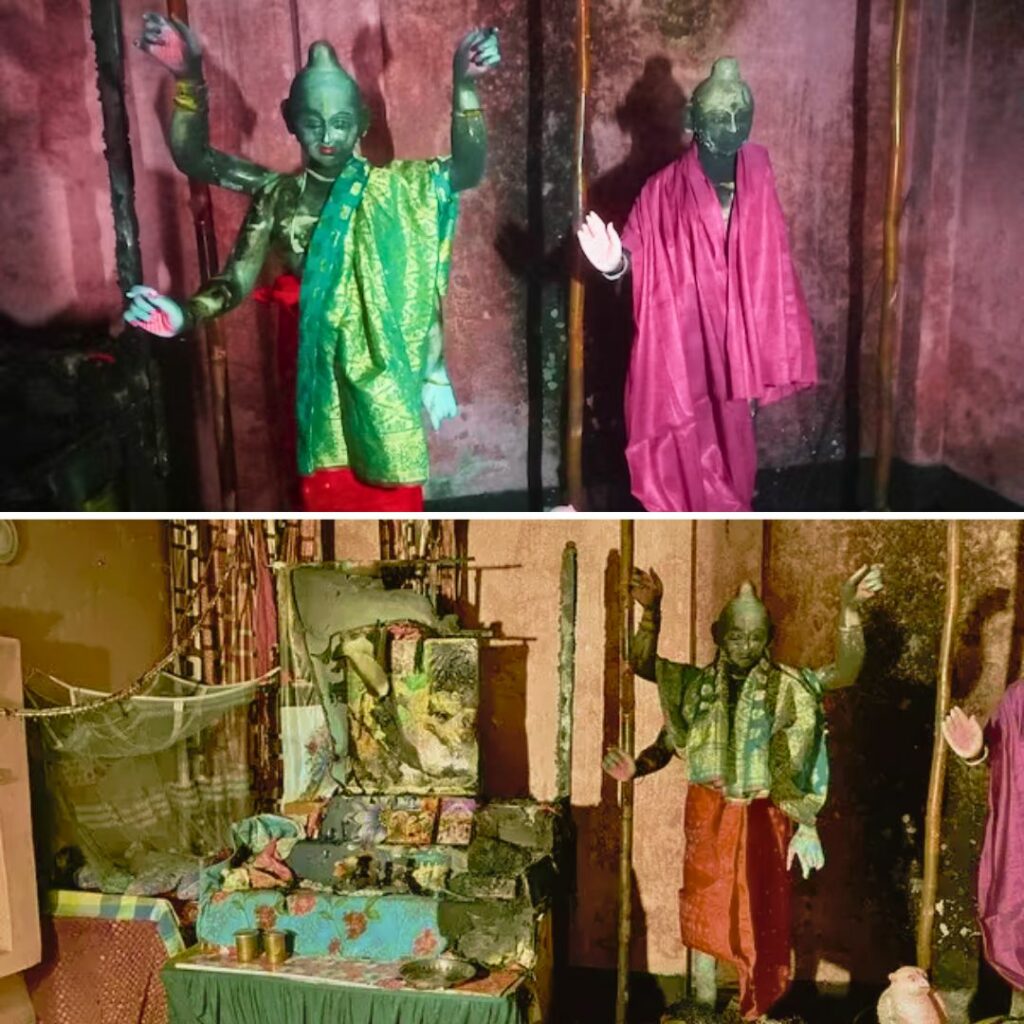In the serene mornings of Southern India, a unique and enchanting ritual unfolds as women meticulously create art at the entrance of their homes. This ancient tradition, known as “Kolam,” transforms doorsteps, courtyards, and streets into vibrant canvases adorned with abstract beauty. More than just an artistic practice, Kolam is a cultural identity and a symbol of prosperity ingrained in the daily lives of the people, especially in Tamil Nadu.
Every morning, well before dawn, women in Tamil Nadu engage in a rhythmic and purposeful routine. The intricate art of Kolam begins with the cleaning of home entrances, followed by the sprinkling of water. With deft movements, these women create geometric marvels using rice flour, symbolizing auspiciousness and prosperity. The patterns, ranging from simple to complex, exhibit a harmonious blend of dots, swirls, loops, and lines.
Kolam extends beyond mere decoration; it is a cultural emblem and a significant part of daily life. Its presence is considered a warm welcome, not only for guests but also for insects and birds, offering sustenance and symbolizing harmonious coexistence. From a spiritual perspective, drawing Kolams is a gesture of inviting Goddess Lakshmi while bidding farewell to her sister ‘Mudevi.’ Additionally, it serves as a prayer for well-being and a mark of prosperity.
Regional Spread and Variations
While deeply rooted in Tamil Nadu, the art of Kolam has spread to neighboring states like Andhra Pradesh, Karnataka, and Kerala. Its influence has even reached places like Goa and Maharashtra. The practice has transcended geographical boundaries, finding a place in the global Tamil diaspora, including Sri Lanka, Singapore, Malaysia, Indonesia, and Thailand. Known by different names such as Muggu, Tarai Alangaram, and Rangoli, Kolam exhibits regional variations, each with its unique forms and interpretations.
The precise and calculated release of rice powder between thumb and forefinger creates abstract patterns, with mathematical interpretations that have attracted researchers. The symmetric and unique designs often represent birds, animals, celestial bodies, and more. The month of Mārgaḻi/Margasira holds a special significance, with young women showcasing their skills by covering entire roads with colossal Kolam patterns.
In contemporary times, Kolam has found resonance on social networking platforms like Facebook. Talented Kolam artists with substantial online followings contribute to making this traditional art form a vital component of South India’s contemporary art scene. While traditional materials like rice flour remain prevalent, modern interpretations include chalk, paints, and even vinyl stickers.
The art of Kolam is a living testament to the rich cultural heritage of Southern India. Beyond its visual appeal, Kolam embodies a deep connection to spirituality, community, and tradition. As millions of households continue this daily ritual, drawing Kolams at the break of dawn, the art form persists as a symbol of prosperity, an expression of creativity, and a bridge between the past and the present.
Also Read: Know About Pragpur, India’s Charming Heritage Village In Himachal Pradesh











